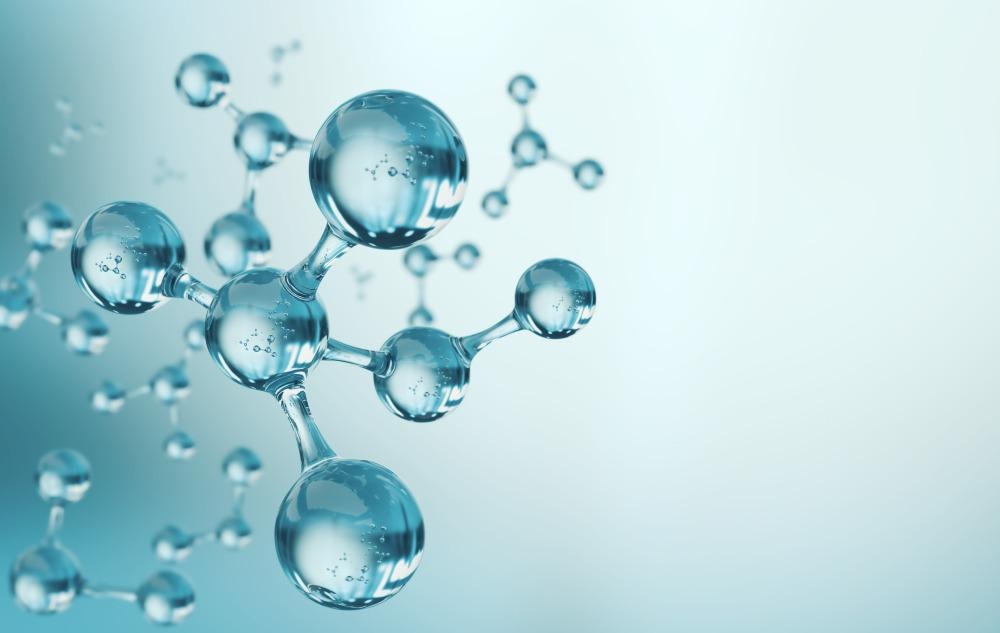In a study published recently in the Journal of Physics and Chemistry of Solids, to develop self-supported Cu-Ni-Se nanoparticles on carbon cloth (CC) deduced from Cu-Ni-MOF nano geometric shapes for oxygen evolution reaction (Cu-Ni-Se@CC), a creative solution was used.

Study: Self-supported Cu–Ni–Se nanostuctures on carbon cloth derived from Cu–Ni-MOF nanorectangles with exceptional electrocatalytic performance for oxygen evolution reaction. Image Credit: Anusorn Nakdee/Shutterstock.com
What are OERs and Why are they Important?
Due to the massive usage of natural resources and the need for a study to develop ecologically sustainable sources of energy, hydrogen power has emerged as one of the best potential sources of power in recent times.
Electrocatalyst water splitting is now the most cost-effective method of producing hydrogen sustainably as a renewable electricity process.
In a broad sense, the slow kinetics of oxygen evolution reaction can significantly impact water electrolysis effectiveness.
Although RuO2 and IrO2 are deemed as attractive oxygen evolution reaction catalysts, their lack of supply, increased price, and low stability limit their real-world applications.
As a result, the design and implementation of efficient oxygen evolution reaction (OER) electrode materials devoid of precious and unusual elements are crucial for boosting the efficiency of creating hydrogen from water electrolysis.
Atmosphere transition metal selenides (TMSes) with outstanding stability, high resilience, small price, and good conductivity have emerged as a potentially credible alternative to noble metals for oxygen evolution reaction. Furthermore, since its residual energy is close to the 3p and 3s subshells, Se's 3d orbital may assist in binding with metals, resulting in higher metallicity in TMSes, which is beneficial for chemical incidence and electron transfer.
Regarding TMSes, Ni-based elements and components have excellent electrocatalytic characteristics towards the oxygen evolution reaction cycle owing to the small difference in electronegativity across Se and Ni and the peculiar Ni electronic structure.
Methodology Followed
Findings have shown that collaborative metallic poisoning of Ni with other elements like Fe, Co, W, and Cu may rearrange the surface electrical properties of Ni-based selenides.
Furthermore, provisional substitute of Ni to metal atoms forming multi TMSes is a clever strategy for improving electrocatalytic performance by establishing stimulatory effects and more reaction mechanisms by attenuating the 3d orbitals electrical properties with effective charge transportation between both the server and foreign component.
Metal-organic frameworks (MOFs) are composed of chemical bonding and trace metals or groupings and have a huge surface area, excellent stability, and highly permeable properties. They have generally been reported as advantageous self-templates for constructing innovative energy and photocatalytic components with highly porous nanoparticles.
Carbon porosity nanowire, empty dodecahedra, nanofiber, and multi-layered CuO@NiO empty spheres developed from similar MOFs, for example, shown excellent energy storing and oxygen evolution reaction capability.
This research demonstrates that MOFs may be considered distinct predecessors for constructing diverse porous nanomaterials using a simple pyrolysis method.
Specifically, owing to the inherent microporous properties of MOFs composition, the end results gained substantial permeability during decomposition. As a result, MOF-derived anodes are appealing and realistic options for use as electrocatalyst elements in oxygen evolution reaction applications.
Immediate development of MOFs as self-templates on electrical surfaces may be a strong technique for achieving maximal catalytic performance, contributing to the fabrication of enhanced nanomaterials for the oxygen evolution reaction process.
Achieved Outcomes
A new method was used to create self-supported Cu-Ni-Se nanomaterials on carbon cloth (CC) derived from Cu-Ni-MOF nano rectangles for oxygen evolution reaction.
After growing self-supported Cu-Ni-MOF nano rectangles on CC, they were transformed to Cu-Ni-Se@CC using a simple annealing technique in Se vapor at 350oC.
The self-supported Cu-Ni-Se@CC electrodes were used as a binder-free cathode in oxygen evolution reaction activation. For oxygen evolution reaction in acidic circumstances (1M), the self-supported Cu-Ni-Se@CC showed a lower energy barrier of 270 mV at a concentration of 10 mA cm2 with sufficient certainty.
Cu-Ni-excellent Se@CC's oxygen evolution reaction performance may be attributed to its distinctive features, including significant catalytic site contact, large surface areas, and efficient transportation systems. To summarise, unique self-supported Cu-Ni-Se nanoparticles on CC obtained from Cu-Ni-MOF nano rectangles as an optimal electrode material for oxygen evolution reaction usage were developed for the very first time utilizing a hydrothermal approach paired with a simple annealing process in Se vapor.
In acidic circumstances, this readily produced and affordable binder-free electrode material exhibits excellent bioactivity with as little as 270 mV at a concentration of 10 mA cm2.
Nanoporous Membranes Can Help Blue Energy Become a Reality: Here's How.
Reference
Liu, Z., He, Y., Yao, C., Ji, X., Zhao, B., Gao, D., & Koudakan, P. A. (2022). Self-supported Cu–Ni–Se nanostuctures on carbon cloth derived from Cu–Ni-MOF nanorectangles with exceptional electrocatalytic performance for oxygen evolution reaction. Journal of Physics and Chemistry of Solids. Available at: https://doi.org/10.1016/j.jpcs.2022.110602.
Disclaimer: The views expressed here are those of the author expressed in their private capacity and do not necessarily represent the views of AZoM.com Limited T/A AZoNetwork the owner and operator of this website. This disclaimer forms part of the Terms and conditions of use of this website.